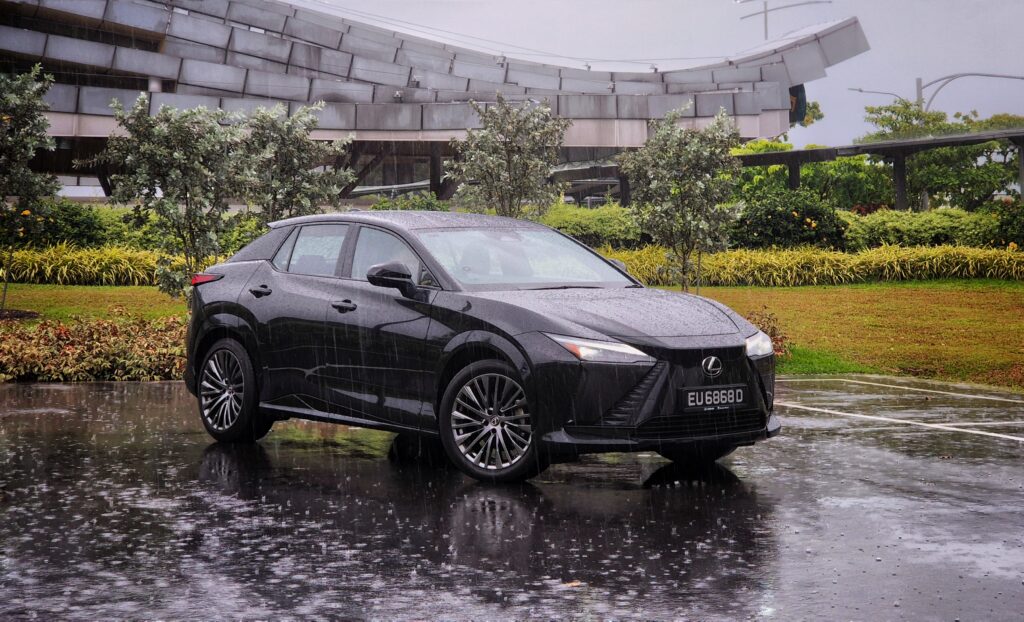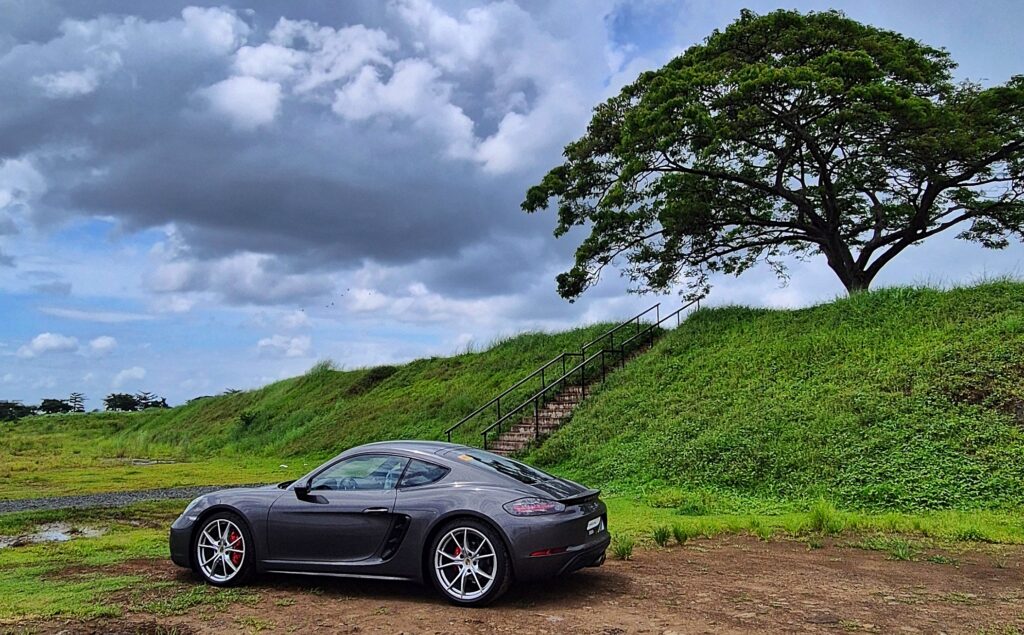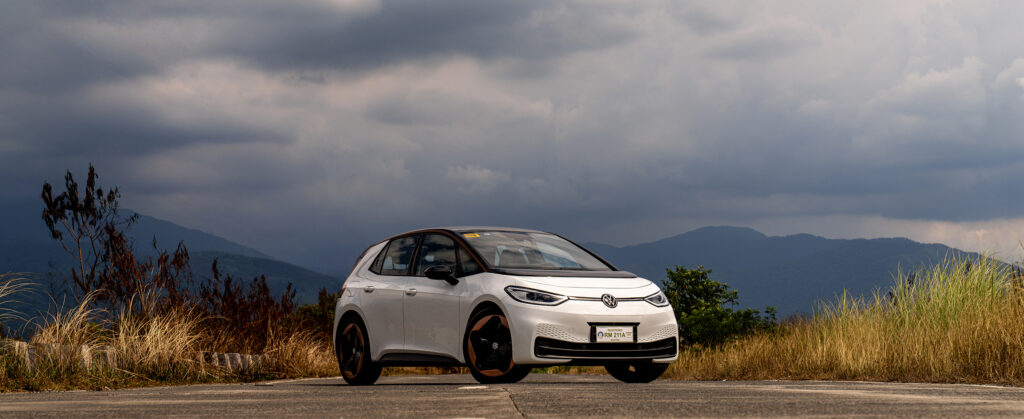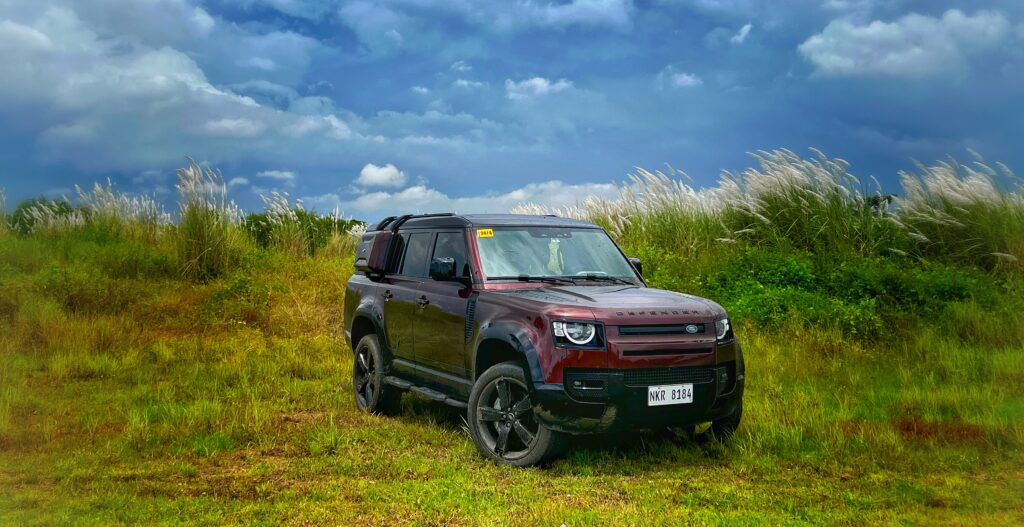In the automotive universe, one luxury brand seems to truly march to a different beat: Lexus.
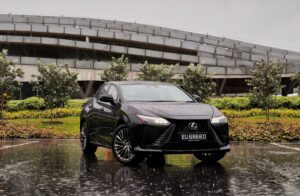
The very first Lexus, the LS400, was truly groundbreaking, outclassing the equivalent Mercedes-Benz S-Class of its time on which it was benchmarked. It redefined the benchmark for a true luxury sedan experience thought to have been monopolized by the Germans.
Then came the equally groundbreaking Lexus LFA. The gestation period for Lexus’ supercar was a lengthy decade, as the company switched late in its development from a steel-based structure to a carbon-fiber composite chassis, a nod to the Toyoda family’s loom and textile origins. More than a decade since its launch, the LFA remains a highly coveted and sensational supercar, still relevant in this day and age.
And yet, Lexus was also the first to introduce an electrified hybrid variant in every single one of its models, beating the European aristocrats to the market. From the sedans to the crossovers and SUVs, electrification has long been a thrust for the brand.
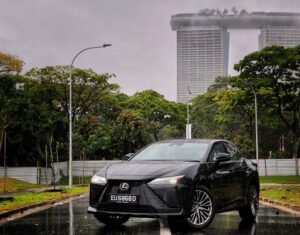
But its parent company Toyota’s Chairman, Akio Toyoda, has been making bold statements about electrification. The esteemed Morizo has bluntly said that the future is not solely electric. But Toyota and Lexus will still continue to develop and sell cars with all manner of propulsion: internal combustion, hydrogen, hybrid-electric, and fully electric vehicles.
The Lexus RZ450e is the luxury marque’s full electric offering. It is built atop Toyota’s e-TNGA platform, the first dedicated EV platform from the group. It utilizes dual electric motors front and back for a combined output of 308 hp and 435 Newton-meters of instant torque.
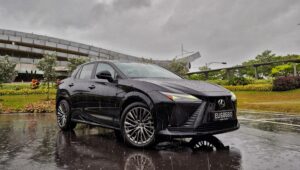
It’s got a 71.4 kWh battery pack that promises to deliver a claimed 476 km range (in Singapore at least). On-board DC charging is capable of up to 150 kilowatts.
Gone is the oversized spindle grille, replaced by what looks like a pouty snout with some whiskers and a tiny mouth. The massive wheels look gorgeous but do rob the crossover of some precious range. The plastic fender flares in black give it some semblance of a butch SUV, which is ironic given the aforementioned huge wheels and highway terrain performance tires. There’s a prominent kink on the hind doors, tightening up the sexy rear end visually. Out back, it’s less polarizing, more attractive, and the brake lamp spans the entire width of the car, casting an eerie glow at night or in the intense monsoon downpour.
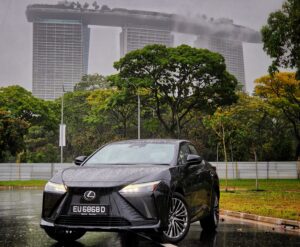
The inside is made up of synthetic ultrasuede fabric and recycled or sustainable plastics and other similar materials. Three colors are available for the ultrasuede: blue, grayscale, and hazelnut. Lexus is making a big push for sustainability; hence all the recycled, recyclable, and synthetic materials reduce environmental impact.
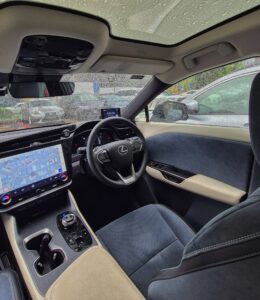
An electrochromic glass roof allows soft daylight to illuminate the airy cabin even on all but the brightest and hottest of days. The flat floor gives oodles of space, and there’s 522 liters of cargo space in the boot.
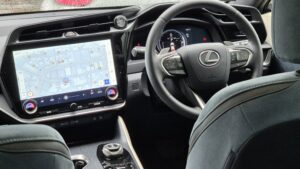
There’s a large 14-inch screen with wireless Apple CarPlay and Android Auto telephony. Crucially, the RZ450e comes with Lexus Safety Sense+ 3.0. This means key critical active safety features such as the Pre-Collision System (PCS) with pedestrian and cyclist detection, Dynamic Radar Cruise Control (DRCC), and Lane Tracing Assist (LTA) are standard.
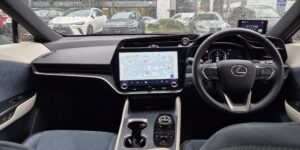
An impressive Mark Levinson high-fidelity surround sound system with 13 speakers and an Active Sound Control to cancel external noise and vibration is also employed to deliver a more comfortable, refined, and luxurious drive.
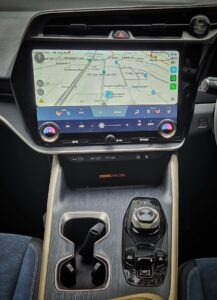
And the crucial question: how does the RZ450e drive?
I’ve driven the 450e in the Philippines, and for the most part, it was impressive. I do miss the aggressive power delivery at tip-in, typical of all EVs. But that simply isn’t the Lexus way. Instead, a gentle but consistent power delivery propels you forward at a moderate pace. As with anything Zen, the RZ450e doesn’t feel frenetic even when you floor it; it just arrives where it needs to be without the pomp and spectacle of many other EVs that feel like uncaged beasts with their aggressive throttles.
In Singapore, where speed is heavily regulated and traffic is steady and consistent, it feels perfectly at home. The massive 20-inch alloy wheels with 235/50R20 front and 275/35R20 rear all-season Dunlop SP Sport Maxx performance tires ride surprisingly well, although the suspension seems to lack both stroke and rebound control. It’s less obvious on Singapore’s super smooth roads but more apparent in Metro Manila traffic.
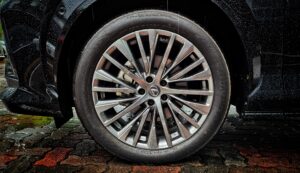
The steering is light, the brakes firm if a bit over-assisted. Otherwise, the Lexus feels smooth, refined, and ultimately unflustered, undisturbed, and unbothered. It might not be perfect; its rivals may offer more, but none offers the grace and serenity of a Lexus.
We drove through a heavy downpour from the Lexus’ showroom along Leng Kee Road, then headed towards the new Toyota Motor Asia office in Guocco Tower, in Tanjong Pagar which also happens to be Singapore’s tallest building.
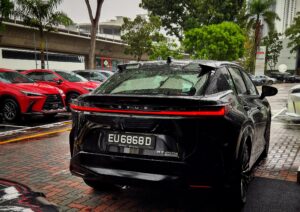
Definitely a confusing area, but thanks to the RZ450e’s numerous ADAS safety systems, it kept me safe and alerted me of oncoming cars (the LHD-RHD confusion at intersections, i.e. where to look and where to turn). A stressful environment but made easier thanks to the RZ450e. From the Toyota Motor Asia Offices we headed west towards Gardens by the Bay for more photos and even more rain.
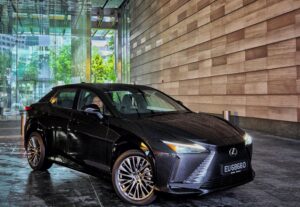
There are paddle shifters on the steering wheel, but instead of changing gears, the RZ450e offers four available levels of regenerative braking.
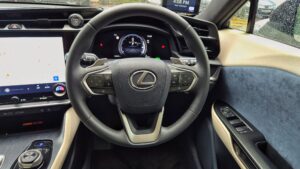
Regarding the range, in the island city-state, it seems perfectly achievable as Singapore is quite flat and traffic moves at a constant 80-90 km/h on the expressways. In the Philippines, around a ~380 km range is more realistic given Metro Manila’s hilly topography, especially if you travel east-west across the metropolis a lot or go down south.
If you seek something unique that marches to a different beat, with grace, confidence, and composure absent among the usual suspects, the Lexus RZ450e is a true masterclass of elegance and style.

